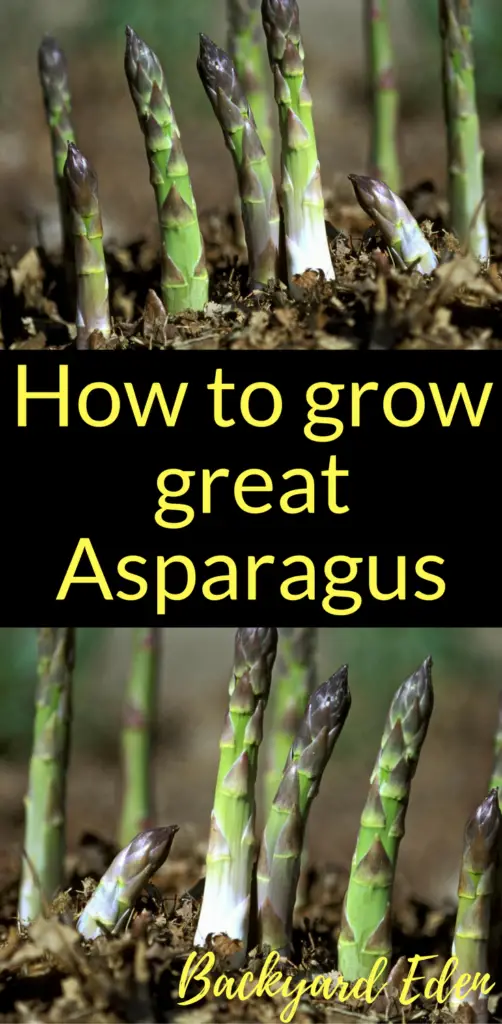How to Grow Great Asparagus
If you love fresh, succulent spears of asparagus but don’t want to pay the price they want at the grocery store. You should consider growing your own! Unlike most vegetables, asparagus is a perennial plant – one planting will return year after year, and a well-tended bed can produce an abundant crop for 25 years or more. Asparagus is an investment, and like most investments, requires some specific steps in order to reap rewards. You too can harvest fresh delicious produce if you follow these guidelines on how to grow great asparagus!
How to grow great Asparagus
Soil is everything
Asparagus needs soil which is rich in organic matter and drains easily. If your soil is like mine – clay that is as unworkable as Play-Doh – you’ll need to incorporate goodies such as leaf mold, aged manures and compost the season before you plant. Asparagus also likes full sun, so be sure that your plot gets a minimum of 6 hours of sunlight during the growing season.
Related: How to amend clay soil
Buy good stock
You can start Asparagus from seed but it takes several years before producing a crop. Getting a harvest is easier and quicker if you buy crowns. It’s always helpful to purchase top-quality asparagus roots from a reputable nursery or seed supplier. Two-year roots will yield a crop the second year after planting. The roots should be plump, well branched and look healthy.
Varieties
Look for tried and true varieties that do well in your area. The best way to find this out is to talk with other local gardeners and even your local extension office. They will have the best information for your specific area. In my experience, some good varieties are:
- Jersey King
- Mary Washington
- Purple Passion (this one is purple until it’s cooked or steamed.)
Planting Your Bed
Asparagus is best planted in the spring, but is hardy enough to go into the ground as soon as the soil is workable. Asparagus roots need to be placed into a trench which is approximately 12″ deep and 12″ wide. Space your plants 12″ – 18″ apart. Spread the roots when you plant for maximum growth.
Tip: The best method is dig your planting hole out and then mound of the soil in the bottom of it. Then spread the roots out over the mound. This will encourage the spreading of the roots.
Cover with 6″ of soil, and water in. When the plants begin to grow, continue to cover – or hill – with the remaining soil.
When your plants are up, mulch your bed with leaves or straw to retain moisture and keep weed growth down.
Feeding
Asparagus plants love to eat, and need to be fed three times a year with a high-nitrogen fertilizer. Generally, feed your bed in early spring before any spears are visible, a few weeks after you’ve harvested the last spears, and in the fall. Organic growers like to top-dress their bed each fall with aged horse or chicken manure. Heat from the decaying manure helps to keep the roots from freezing during harsh winters as well as providing food for the plants and texture for the soil.
Enjoying your harvest
And what can you do with your first crop? Steamed asparagus is delicious with an herb butter topping, mixed with rice, or au gratin. You can also chop very young spears and eat them raw or with a veggie dip. You can also wrap the spears in bacon and the bake until the bacon is cooked through.
If you like this article on how to grow great Asparagus, please share it on social media and with friends. For all the latest recipes, container gardening tips and growing guides subscribe to our newsletter in sidebar.
Also, check out our article on Perennials to grow in your garden or Best Herbs to Grow!
Be sure to Like us on Facebook and Follow us on Instagram, Twitter, and Pinterest!






